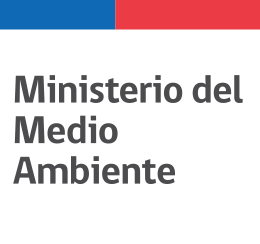Identificación de alainmyxos:
Libelloides coccajus,
Añadido el 26 abril 2024
Apoyo a
Identificación de alainmyxos:
Orquídea Mosca
(Ophrys insectifera)
Añadido el 26 abril 2024
Apoyo a
Identificación de alainmyxos:
Orchis purpurea,
Añadido el 26 abril 2024
Apoyo a
Identificación de alainmyxos:
Orquídea Mosca
(Ophrys insectifera)
Añadido el 26 abril 2024
Apoyo a
Identificación de alainmyxos:
Orchis purpurea,
Añadido el 26 abril 2024
Apoyo a
Identificación de alainmyxos:
Orchis militaris,
Añadido el 26 abril 2024
Apoyo a
Identificación de alainmyxos:
Orchis anthropophora,
Añadido el 26 abril 2024
Apoyo a
Identificación de alainmyxos:
Lila Común
(Syringa vulgaris)
Añadido el 24 abril 2024
Apoyo a
Identificación de alainmyxos:
Mariposa Vanesa Pintada
(Vanessa cardui)
Añadido el 24 abril 2024
Apoyo a
Identificación de alainmyxos:
Esfinge del Euforbio
(Hyles euphorbiae)
Añadido el 21 abril 2024
Apoyo a
Identificación de alainmyxos:
Esfinge del Euforbio
(Hyles euphorbiae)
Añadido el 21 abril 2024
Apoyo a
Identificación de alainmyxos:
Aurora
(Anthocharis cardamines)
Añadido el 18 abril 2024
Apoyo a
Identificación de alainmyxos:
Mariposa Pavorreal
(Aglais io)
Añadido el 16 abril 2024
Apoyo a
Identificación de alainmyxos:
Aurora
(Anthocharis cardamines)
Añadido el 16 abril 2024
Apoyo a
Identificación de alainmyxos:
Mariposa Cometa Macaón
(Papilio machaon)
Añadido el 16 abril 2024
Apoyo a
Identificación de alainmyxos:
Fresas
(Género Fragaria)
Añadido el 16 abril 2024
Apoyo a
Identificación de alainmyxos:
Mariposa C-Blanca
(Polygonia c-album)
Añadido el 16 abril 2024
Apoyo a
Identificación de alainmyxos:
Escarabajo Sanjuanero
(Melolontha melolontha)
Añadido el 14 abril 2024
Apoyo a
Identificación de alainmyxos:
Cicindela Campestre
(Cicindela campestris)
Añadido el 14 abril 2024
Apoyo a
Identificación de alainmyxos:
Mariposa Almirante Rojo
(Vanessa atalanta)
Añadido el 14 abril 2024
Apoyo a
Qué
Mariposa Almirante Rojo (Vanessa atalanta)Observ.
stomlins701Descripción
One of many seen at Eagle Mountain Park
Identificación de alainmyxos:
Mariposa Almirante Rojo
(Vanessa atalanta)
Añadido el 14 abril 2024
Apoyo a
Identificación de alainmyxos:
Cicindela Campestre
(Cicindela campestris)
Añadido el 13 abril 2024
Apoyo a
Identificación de alainmyxos:
Pyrochroa serraticornis,
Añadido el 12 abril 2024
Apoyo a
Identificación de alainmyxos:
Lagartija Roquera
(Podarcis muralis)
Añadido el 12 abril 2024
Apoyo a
Identificación de alainmyxos:
Orchis anthropophora,
Añadido el 12 abril 2024
Apoyo a
Identificación de alainmyxos:
Género Lycogala,
Añadido el 11 abril 2024
Apoyo a
Identificación de alainmyxos:
Mariposa Pavorreal
(Aglais io)
Añadido el 11 abril 2024
Apoyo a
Identificación de alainmyxos:
Cicindela Campestre
(Cicindela campestris)
Añadido el 11 abril 2024
Apoyo a
Identificación de alainmyxos:
Orquídea Gigante
(Himantoglossum robertianum)
Añadido el 09 abril 2024
Apoyo a
Identificación de alainmyxos:
Mariposa Pavorreal
(Aglais io)
Añadido el 08 abril 2024
Apoyo a
Estadísticas
- 3531





















































